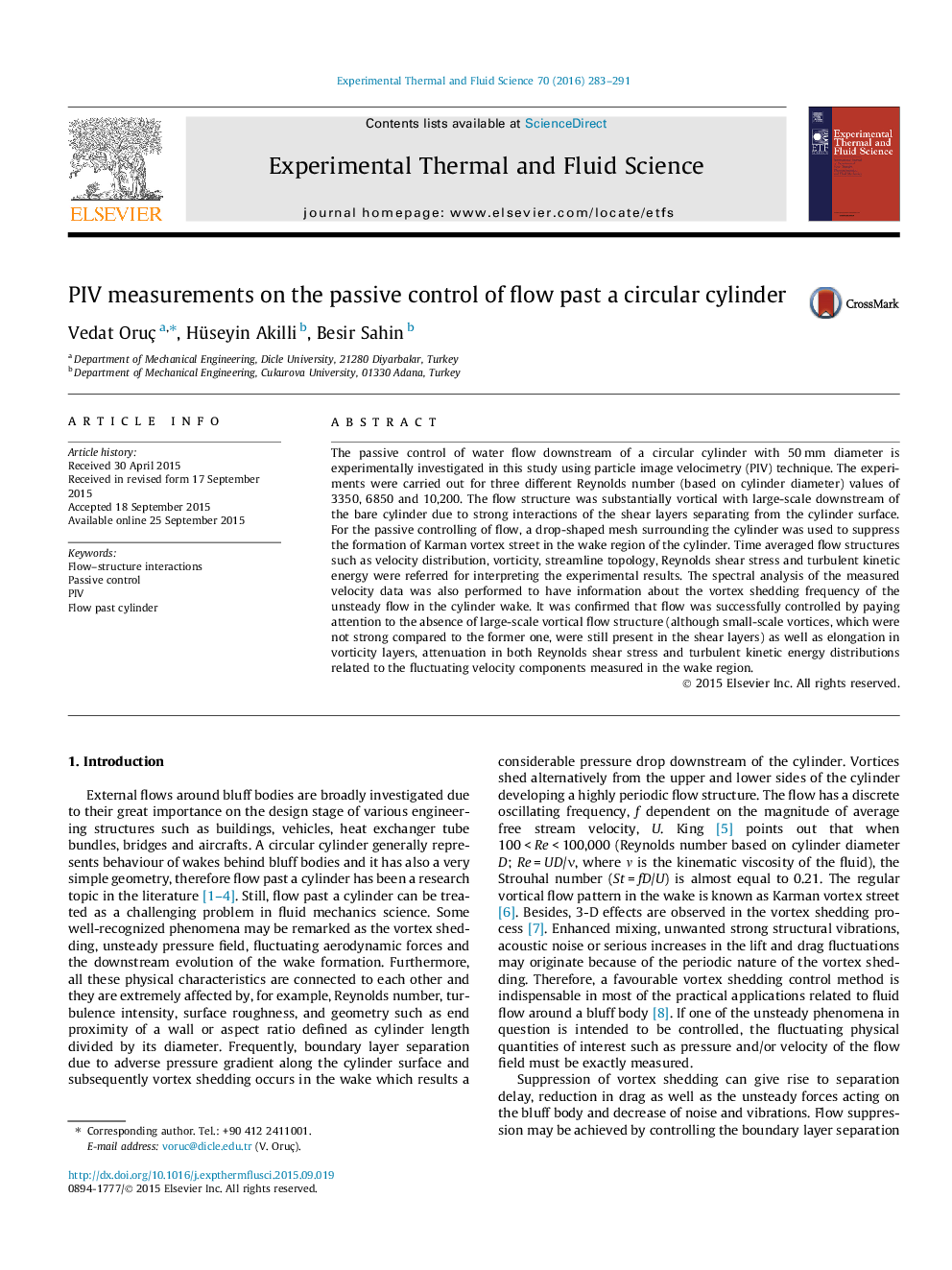| Article ID | Journal | Published Year | Pages | File Type |
|---|---|---|---|---|
| 7052085 | Experimental Thermal and Fluid Science | 2016 | 9 Pages |
Abstract
The passive control of water flow downstream of a circular cylinder with 50Â mm diameter is experimentally investigated in this study using particle image velocimetry (PIV) technique. The experiments were carried out for three different Reynolds number (based on cylinder diameter) values of 3350, 6850 and 10,200. The flow structure was substantially vortical with large-scale downstream of the bare cylinder due to strong interactions of the shear layers separating from the cylinder surface. For the passive controlling of flow, a drop-shaped mesh surrounding the cylinder was used to suppress the formation of Karman vortex street in the wake region of the cylinder. Time averaged flow structures such as velocity distribution, vorticity, streamline topology, Reynolds shear stress and turbulent kinetic energy were referred for interpreting the experimental results. The spectral analysis of the measured velocity data was also performed to have information about the vortex shedding frequency of the unsteady flow in the cylinder wake. It was confirmed that flow was successfully controlled by paying attention to the absence of large-scale vortical flow structure (although small-scale vortices, which were not strong compared to the former one, were still present in the shear layers) as well as elongation in vorticity layers, attenuation in both Reynolds shear stress and turbulent kinetic energy distributions related to the fluctuating velocity components measured in the wake region.
Keywords
Related Topics
Physical Sciences and Engineering
Chemical Engineering
Fluid Flow and Transfer Processes
Authors
Vedat Oruç, Hüseyin Akilli, Besir Sahin,
